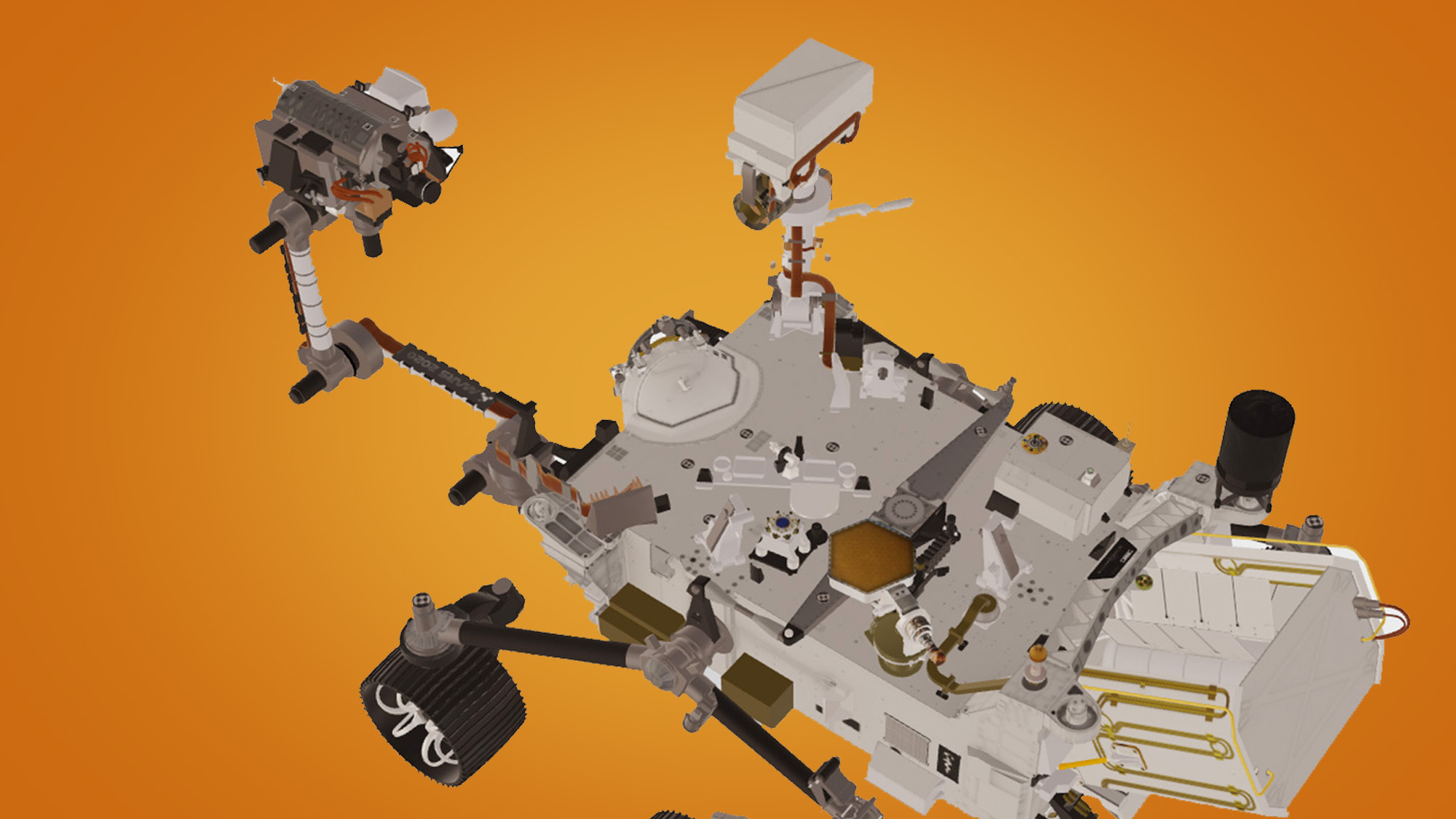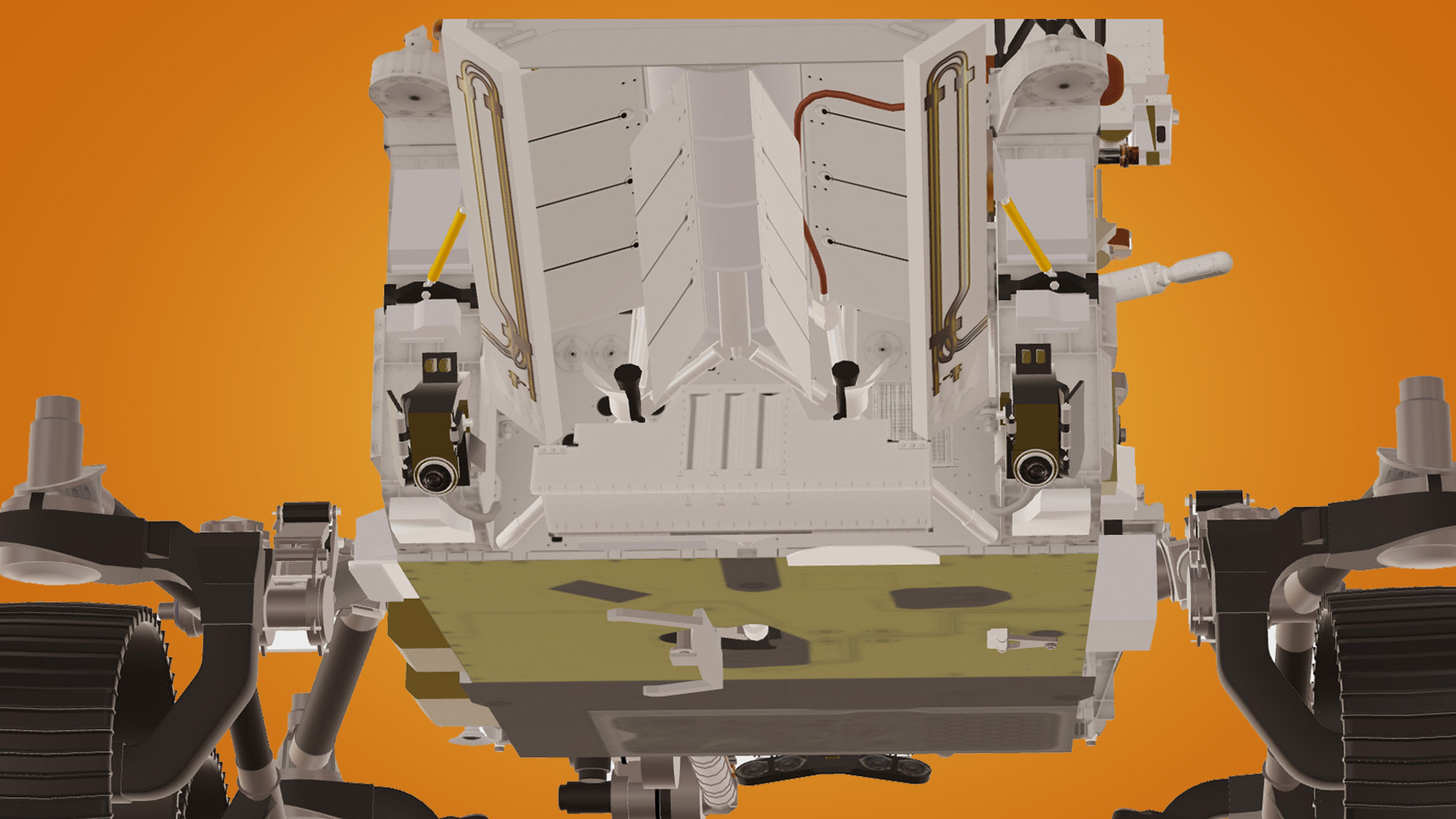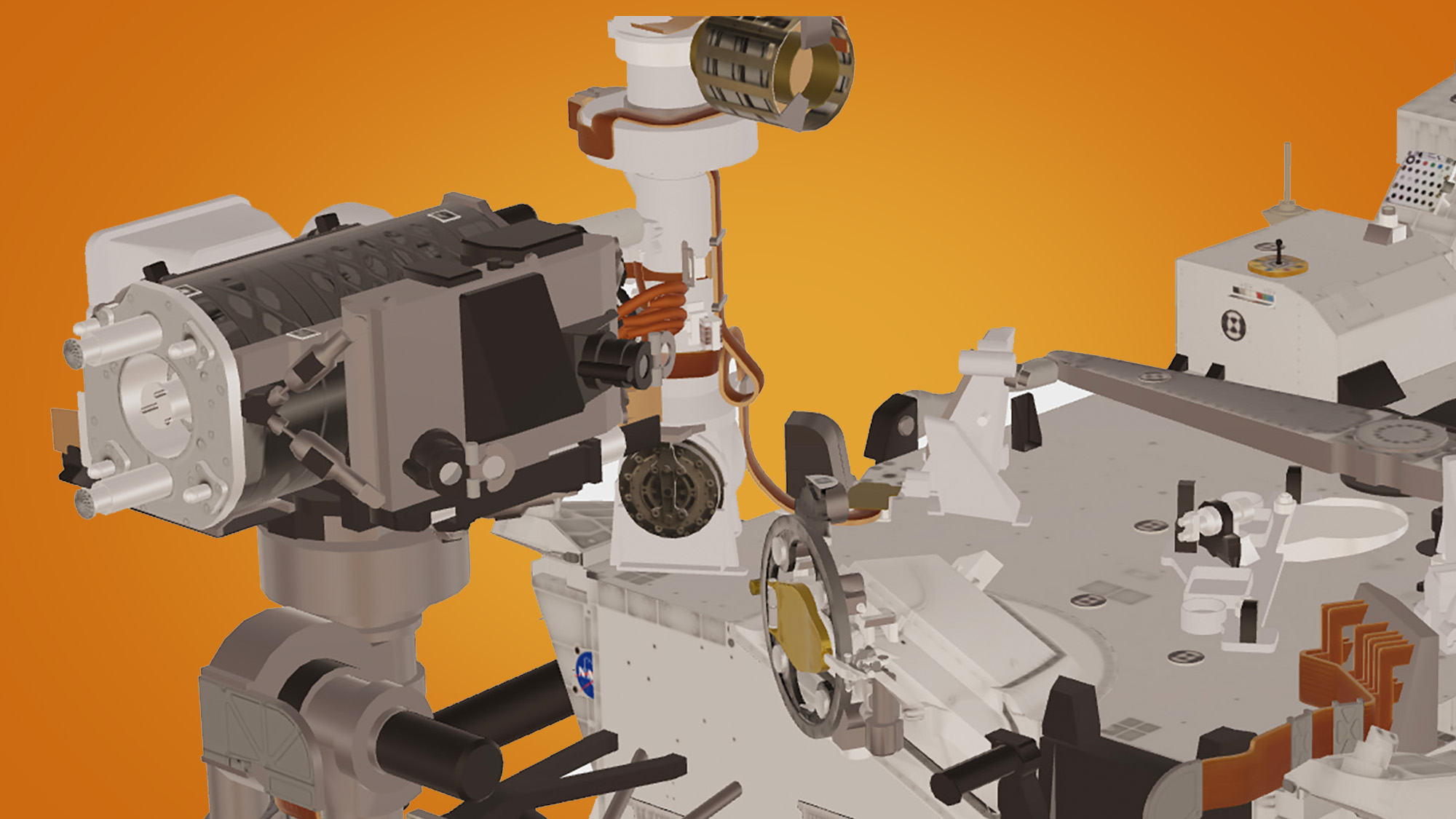The NASA Mars Perseverance Rover has successfully launched – and it's carrying a record number of cameras to help it hunt for signs of ...
The NASA Mars Perseverance Rover has successfully launched – and it's carrying a record number of cameras to help it hunt for signs of life on the red planet.
The six-wheeled robot, which is the successor to the Mars Curiosity Rover, took off from Cape Canaveral Air Force Station in Florida and is expected to touch down on the surface of Mars on 18 February 2021.
Its younger sibling landed on Mars in August 2012 and remains there, investigating to this day, living off its radioactive isotope power source.
So why has NASA launched another Mars rover and what's so special about the many cameras it's taking for the ride? We've taken a closer look at its imaging tech – and some of it has a surprising amount in common with the earth-bound camera in your pocket...
- How to take night sky images with your phone
- These are the best beginner DSLRs you can buy right now
- 23 home photography projects: the best ideas for staying creative in lockdown
Perseverance vs Curiosity: the camera upgrades
The Mars Perseverance Rover has the same Wall-E charm as the Curiosity, but the tech inside is very different.
Curiosity has 17 cameras, Perseverance has 23, including four used to document the landing process, plus the parachute that will help this remarkable 'car' land safely.
Later on we will dig into what these 23 cameras do, but the fundamental technical upgrades deserve some attention first.

Curiosity uses 1MP black-and-white cameras to capture the amazing images you can see posted regularly on the NASA website. On the other hand, Perseverance has 20MP full color sensors, much closer to the resolution of your phone or camera.
This means it can take photos without the multi exposure stitching method Curiosity uses. Some of its cameras also have wider-angle lenses, again letting it capture more of Mars’s landscape without panning.
"Our previous Navcams would snap multiple pictures and stitch them together," says Colin McKinney of JPL, product delivery manager for one of Perseverance camera families. "With the wider field of view, we get the same perspective in one shot.”
Portrait mode on Mars
Why does the old Mars Rover have such low-res hardware, which seems old-school even for 2012?
Curiosity was in development long before it launched, obviously, but there was also the data rate to consider. You can’t simply Bluetooth or AirDrop photos from the surface of Mars to Florida. Even with Bluetooth 5.0.
NASA has mitigated this problem by using spacecraft in orbit around Mars as data relays. The Mars Reconnaissance Orbiter MAVEN and the European Space Agency's Trace Gas Orbiter will support the Perseverance Rover in this way for two years, which is the initial period of its mission.

Perseverance’s cameras also make much greater use of stereoscopy. This is where two cameras are placed near to each other, but with enough distance between that they have a slightly different view of a scene. Those differences are then analyzed to produce a 3D depth map that can distinguish near objects from far ones, and create three dimensional images.
Many smartphones use the same technique for their 'Portrait' modes, which blur the background to emulate the effect of a wide aperture DSLR-style camera lens. For those of us who prefer to read NASA’s blog than take selfies, it means we can expect amazing high-resolution color 'first person' images from the surface of Mars that we can view through a virtual reality headset or Google Cardboard.
That’s not their real role, of course. The 23 cameras and two microphones are Perseverence’s eyes and ears.
“It will sense the air around it, see and scan the horizon, hear the planet with microphones on the surface for the first time, feel it as it picks up samples to cache,” says Thomas Zurbuchen, Associate Administrator for NASA’s Science Mission Directorate.
These cameras can be split into a few categories. There are ones just to record the landing process which, if all goes well, we can look forward to seeing on 18 February 2021.
Then there are the navigation and hazard detection cameras, plus its 'science cameras'. These are the eyes for Perseverance’s investigational tools like its robotic arm. Let's take a closer look at how some of these work.
The Mars rover's head
The images that we’ll see from Perseverance are most likely to come from the equivalent of the rover's 'head', if this were a Pixar character.
Two sets of 20MP Navcams sit at either side of the head on Perseverance’s main mast. These will be used by the team’s engineers to find safe paths for the Rover, and have the visual acuity to "spot a golf ball from 82 feet”, according to NASA.
This may be with the help of the Mastcam-Z units that sit right beside these 20MP “eyeball” cameras.

The 'Z' part stands for zoom. Two groups of zoom lens elements sit inside the barrel, providing focal lengths of 28-100mm, comparable with a great all-rounder DSLR lens.
They can focus on objects just two meters away and their 7.4-micron pixel pitch is not far off that of the Sony Alpha A7S III (8.4 microns).
Resolution is far lower, at 2MP (so a max 1600x1200 image size), but the combination of wide and zoom cameras gives Perseverance’s head unit an incredibly versatile view of its Martian surroundings.
See that part above these cameras, which looks a little like a home cinema projector? This is the Perseverance’s SuperCam. Despite the exciting name, it’s not a traditional imaging camera. The SuperCam uses a laser to analyze rocks and soil, focusing on a target smaller than the nib of a pencil.

Perseverance also has two rows of wide-angle hazard cameras that let engineers see around the Rover’s feet.
There are four of these cameras on front and two on the back.
You can think of these a little like the parking sensors of a car. They will see rocks and debris not visible to the cameras on the main mast, and can act as a guide to inform where to point the sensors on the robot arm.
Elementary, my dear WATSON
NASA is not afraid of indulging in the odd geeky reference. WATSON and SHERLOC are two teams of hardware sensors on the Perseverance’s robotic arm.
SHERLOC is a spectrometer that uses a deep ultraviolet laser to analyze objects on Mars’s surface, and is aided by the WATSON camera.

This offers a wider, more eyeball-friendly view of what the highly focused SHERLOC sensors are looking at.
NASA says WATSON is “almost identical” to the MAHLI camera used on the older Curiosity Rover. That is a 1600 x 1200 (2MP) camera with a magnifying glass-like field of view, used to look at objects as close as 18.3mm. It can also record 720p video.
What's next for the NASA Mars Rover?
The Perseverance Rover will land in Mars’s Jezero Crater, which has a diameter of 49km. This spot was chosen because it is believed to be the site of what was once a body of water.
“The only way that could form geometrically was for it to be a lake,” NASA planetary scientist Dr. Caleb Fassett told the NY Times.
Night-time temperatures in the crater drop to minus 130 degrees Fahrenheit (minus 90 Celsius), so we're hoping the aptly-named Perseverance has taken a coat.
The rover will stay for “at least one Mars year”, which is worth just under two of our Earth years, searching for signs of microbial life, and collecting soil and samples. These will be stored in sealed tubes. Another camera is used here too – the CacheCam looks down the tube as Martian material is collected, to record the process.
One final bit of exciting tech is that Rover will also carry a helicopter drone, known as Ingenuity. It will be the “first aircraft to attempt control flight on another planet”. And thanks to transmission delays, what limited directions it is given by the engineers will have been programmed-in long before the flight actually takes place.
Perseverance is a 1,025kg, 3-meter long, $2.4 billion space car. Let’s hope it makes its way to Mars safely.
from TechRadar - All the latest technology news https://ift.tt/31m3jaH
via IFTTT










COMMENTS